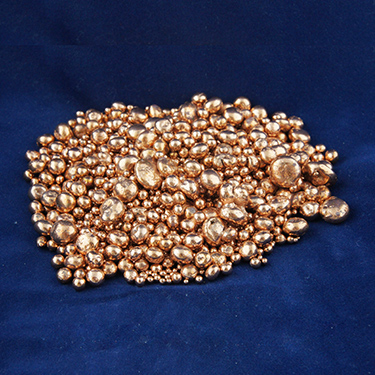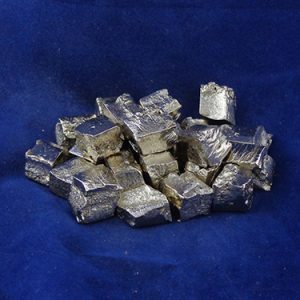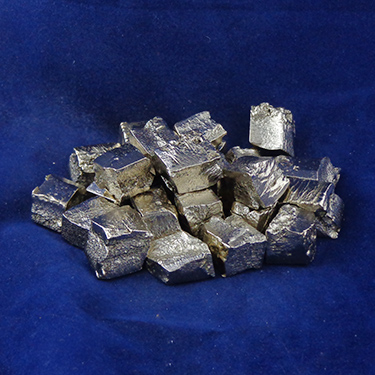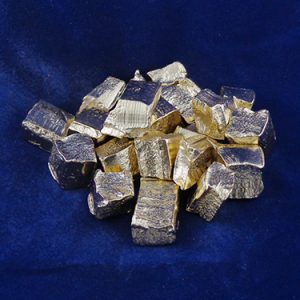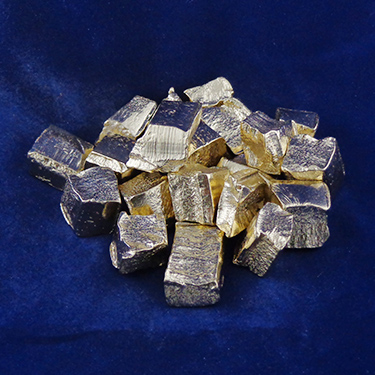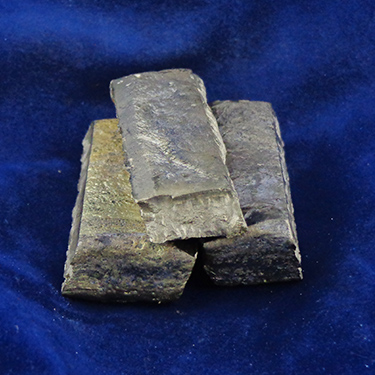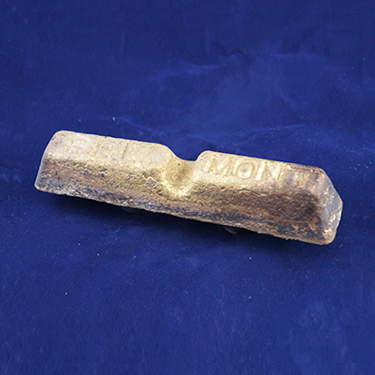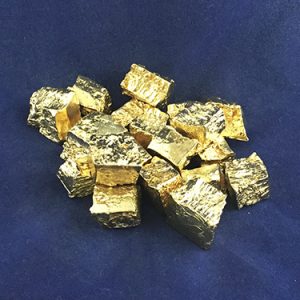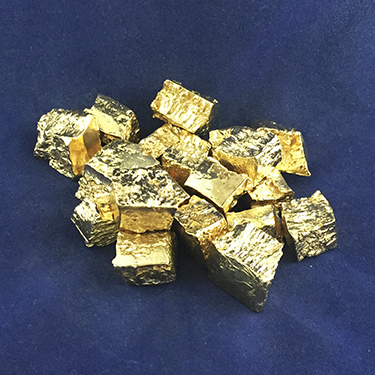For jewelry casting, manufacturers have a wide range of base metals and alloys to select from for their pieces. Most common metals that consumers are familiar with are gold, silver, platinum, and sterling silver. Yet there are many other types of alloys that may be used, including tin and zinc. When determining which alloy to…
|
Master Alloy used in the production of Copper Alloys for a wide variety of industries. The introduction of Boron to Copper Alloys helps eliminate gas and porosity without the loss of conductivity. |
|
| Forms: |
|
|---|---|
| Belmont Product Code | 49817 |
| Nominal Composition: |
|
|---|
Downloads:
| SDS |
Related products
RELATED POSTS

Can Using Nickel Alloys for Jewelry Cause Problems?
When Baron Cronstedt originally extracted nickel in 1751, he intended to produce copper. That’s why he called this newly discovered metal kupfernickel, a German word that roughly translates in English to “devil’s copper.” Even though nickel’s a very useful and popular metal, the name might almost appear ironic to some people in modern times. Though…

Benefits of Adding Phosphor to Copper Alloys
Copper’s immense popularity in products made around the world requires manufacturers to develop this alloy in high quantities to meet rising demand. However, copper by itself is often not suitable for products when it is melted and cast into shape. Its soft properties require strengthening yet also elasticity so it does not become brittle. In…

Bell Metals: Properties and Uses in the Musical Industry
When out for a walk by a church or watching a marching band in a parade, you may have listened to the deep ringing tones of a bell or strikes against a cymbal. Such melodious vibrating sounds are created due to the specific type of metal that is used. Bell metals have been around for…

Shot and Cubed Alloys: Advantages of Using Different Shaped Metals
Due to advanced manufacturing processes, companies today can use a range of base metals and alloys to create the right products and components to their industries. When obtaining the metals that will be used in casting, extruding and forming processes, manufacturers can request the alloys and base metals in various sizes and shapes. Ingots, cubes,…

Zirconium: An Alloying Element with Copper Alloys
Copper alloys are widely used metals for manufacturing purposes around the world. From copper pipes, electrical wires, mechanical components and other applications, manufacturers are creating the products for companies to run their operations and for the public to improve their daily lives. This unique alloy offers excellent thermal and electrical capabilities. Other elements will also…

The Use of White Bronze VS Pewter for Art Casting Applications
When it comes to casting applications, do you know which is better, white bronze or pewter? The most popular choice today and in the past has been pewter, but the use of white bronze has increased in recent years. Here at Belmont Metals, we have both white bronze and pewter that’s perfect for all your…

The Difference Silicon Bronze and Silicon Brass for Art Casting Applications
Craftspeople have been casting with bronze for so long that the BBC called it the “first alloy.” Introduced around 3,500 BC and typically made with mostly copper and tin, items made with bronze offered a more durable alternative to coper alone. Artifacts from brass have been dated to 500 BC. Brass may have been favored…

Gold Karat Alloying: Adding Master Alloys and Virgin Additives to Enhance Characteristics
The beauty and rarity of gold is well-known. It’s treasured by jewelers due to its brilliant color and historians who are in search of antique coins. For everyday applications, gold is found throughout our lives in smart phones, laptops and other electronics as this metal is crafted into gold-plated circuit boards. Applications will use gold…

The Properties of Boron and How Its Used as an Alloying Agent
Are you looking for high-quality copper boron that can be easily mixed with other metals in order to create custom alloys? If you are, we offer 2 percent boron copper, which is a great degassifier, deoxifier and grain refiner. Boron: Uses and Properties Boron is a non-metallic element located in group 13, period 2, block…

Zirconium: Deoxidation and Corrosion Resistance Properties for Copper
Metals such as copper are very popular in a range of industries including manufacturing, plumbing and construction. However, it can be prone to deformations when hot worked or during machining. The deformations can cause the metal to fail to keep its desired shape and impact its structure, especially during pipe bending processes. Adding zirconium can…

Lithium’s Properties and Alloying Capabilities in Manufacturing Processes
When discussing lithium, most people associate this element to the lithium batteries that are found in computing devices such as laptops, smartphones and tablet devices. Yet lithium is a metal that is used throughout a range of commercial, manufacturing and industrial processes including the aviation and aerospace industries. The Properties of Lithium Lithium is considered…

The Versatility of Pewter: Alloy Types for Decorative Applications
When it comes to decorative alloys, pewter has made a comeback in recent years in the jewelry and crafting industries. This versatile alloy can be found throughout the jewelry world as plated rings, necklaces and bracelets. It is also fashioned into medals, pendants, figurines, statues, and replica coins. Many people may not actually know that…

Art Casting with Bronze and Brass
Creating art using the casting process dates back thousands of years as the oldest surviving piece of cast art dates back to 3200 BC. Yet artists today still enjoy creating a range of decorations, statues, figurines, jewelry and other artistic pieces using this process. The procedure involves using molten metals that are poured into a…

Brass and Bronze for Casting Alloys in Decorative Applications
When talking about brass and bronze, we most often think about these alloys in industrial settings, such as bronze industrial bushings and bearings, or brass valves and plumbing fixtures. Yet walk into a museum and will be surrounded by sculptures made out of bronze, or attend a classical opera and you will see brass instruments….

Nickel in Alloys For Jewelry Makers: Looking for Safer Alternatives
No matter the latest fashion trends hitting the New York and Paris runways, every model will have one thing in common: the jewelry they wear. Jewelry manufacturing is a booming business as adults and children of all ages are looking for the right jewelry to wear for everyday activities, special occasions and to have as…

Zirconium adding resistance capabilities to copper for an increase in hardness while handling higher temperatures
Name a metal alloy that has been used for centuries, and many people will think of aluminum, iron or copper. Yet Zirconium should also be added to the list. There are numerous products in our workplaces and our homes that uses this silvery-gray metal, such as lamp filaments, television glass, and even in some deodorants….

Lithium Copper Improving Alloy Quality for Better Product Manufacturing
Working with various copper, pure copper and nickel-based alloys allow for manufacturers to create end products for customers and the necessary components for their operations. However, one issue that companies experience is alloy quality during the melting and casting process. When copper and nickel-based alloys are melted, oxygen becomes introduced into the alloys from the…

Deoxidation of Copper Alloys
The deoxidation of copper alloys involves removing the oxygen using a chemical process, usually other metals. As the oxygen and other gases are removed from the metal, certain properties are either enhanced or decreased. For example, when Phosphor is added to bronze alloys, it reacts by removing the oxygen content from the metal which can…

The right metal for the job
Custom alloys can help streamline production Although custom alloys often are associated with new and advanced applications, they also can solve real-world production problems. For more than a century, Belmont Metals, based in Brooklyn, New York, has been working collaboratively with its customers to create materials that can improve their manufacturing processes. Coming up with…

Safe sparklers
Using lead-free pewter alloys for making jewelry helps alleviate health concerns Adding lead to an alloy can help create characteristics—such as softness and lower melting temperatures—that are useful for many applications. However, lead also is a neurotoxin that is dangerous to animals and humans. Small children are more vulnerable to the effects of lead exposure…

Bring out the best
Master alloys help copper shine Red metals have played an important role in many cultures, including those of the ancient Egyptians and Romans, who crafted tools, cookware, dishes, mirrors and razors out of copper. Modern uses for copper include electrical, heating/cooling applications, fluid handling and plumbing applications, as well as an increasing demand for the…

Controlling composition using Master Alloys
Create materials that meet specific needs by adding master alloys to the mix It’s important to choose the right materials for a job. Using inferior or unsuitable materials can make completing a project more difficult or even derail it entirely. In the metals industry, combinations of metals, called alloys, are generated to meet the specific…

